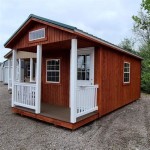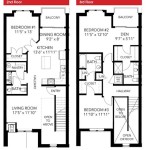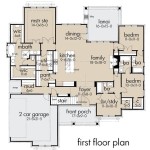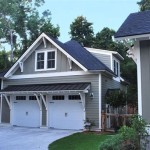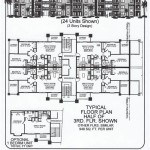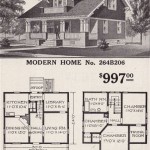5 Bedroom House Plans Under 3000 Square Feet
Finding the right house plan that balances space, functionality, and affordability can be a challenging endeavor, especially when accommodating a larger family. For those seeking a five-bedroom home without exceeding a 3000 square foot footprint, several innovative designs effectively maximize available space. These plans often incorporate open-concept living areas, strategic bedroom placement, and efficient use of vertical space to create comfortable and practical living environments. This article explores various design considerations and examples of five-bedroom house plans under 3000 square feet, highlighting their unique features and suitability for different lifestyles.
The desire for a five-bedroom home often stems from the need to accommodate a growing family, provide dedicated space for guests, or establish a home office. However, larger square footage does not always translate to better living. Thoughtful design and intelligent space utilization are paramount to creating a comfortable and functional home, regardless of its size. Many families are increasingly drawn to smaller, more efficient homes that are easier to maintain and more environmentally friendly. This trend has spurred architects and designers to develop innovative plans that maximize space without sacrificing comfort or style.
When considering a five-bedroom house plan under 3000 square feet, several factors come into play. The layout of the rooms, the flow of traffic within the house, the placement of windows and doors, and the use of storage solutions all contribute to the overall livability of the home. Furthermore, the architectural style, the materials used, and the landscaping can significantly impact the aesthetic appeal and value of the property. It’s essential to carefully weigh these factors and choose a plan that aligns with individual needs, preferences, and budget.
Maximizing Space Through Open Concept Design
One of the most effective strategies for creating a spacious feel in a smaller home is the adoption of an open concept design. This approach typically involves combining the living room, dining room, and kitchen into a single, unified space. By eliminating walls and partitions, the open concept design allows for greater natural light penetration and improved circulation, creating a sense of spaciousness that belies the actual square footage. This design also fosters a more communal atmosphere, encouraging interaction and engagement among family members.
In a five-bedroom house plan under 3000 square feet, the open concept living area often serves as the focal point of the home. It provides ample space for family gatherings, entertaining guests, and everyday activities. The kitchen, typically integrated into the open space, may feature a large island with seating, providing additional counter space and a casual dining area. The living room area can be defined by furniture arrangement and strategic use of rugs, creating distinct zones within the larger space. The dining area, typically adjacent to the kitchen, provides a dedicated space for formal meals.
To further enhance the sense of spaciousness in an open concept design, it is important to consider factors such as ceiling height, window placement, and lighting. Higher ceilings can make a room feel larger and more airy. Large windows allow for ample natural light, brightening the space and creating a connection to the outdoors. Strategic lighting, including recessed lighting, pendant lights, and floor lamps, can further enhance the ambiance and functionality of the open living area.
Storage is also a crucial consideration in an open concept design. Built-in shelving, cabinets, and drawers can provide ample storage space without encroaching on the living area. Utilizing vertical space, such as tall bookshelves or cabinets that reach the ceiling, can also maximize storage capacity. Furthermore, incorporating hidden storage solutions, such as ottomans with storage compartments or benches with built-in drawers, can help keep the living area clutter-free and organized.
Strategic Bedroom Placement and Design
The placement and design of the five bedrooms are critical factors in ensuring the comfort and functionality of a five-bedroom house plan under 3000 square feet. Ideally, the master bedroom should be located in a private area of the house, away from the other bedrooms, to provide a sense of seclusion and tranquility. The remaining bedrooms can be grouped together or scattered throughout the house, depending on the specific design and the needs of the occupants.
In many five-bedroom house plans, the master bedroom is located on the main floor, while the other bedrooms are situated on the upper floor. This arrangement provides a clear separation between the master suite and the children's bedrooms, allowing for greater privacy and noise control. Alternatively, some plans may place the master bedroom on the upper floor, along with the other bedrooms, creating a more cohesive living space for the entire family.
The size of the bedrooms is also an important consideration. While it may be tempting to maximize the number of bedrooms, it is essential to ensure that each bedroom is adequately sized to accommodate a bed, a dresser, and other essential furniture. Smaller bedrooms can feel cramped and uncomfortable, while larger bedrooms can provide ample space for relaxation and personal activities. In some cases, it may be beneficial to sacrifice a small amount of square footage in one bedroom to create a larger living area or a more functional bathroom.
Closet space is another crucial factor to consider when designing the bedrooms. Each bedroom should have adequate closet space to accommodate clothing, shoes, and other personal belongings. Walk-in closets are a desirable feature, but they can take up valuable square footage. In smaller bedrooms, reach-in closets with efficient shelving and storage solutions can provide ample storage without sacrificing space. Furthermore, incorporating built-in storage, such as drawers under the bed or shelves above the closet, can further maximize storage capacity.
The design of the bedrooms should also be conducive to rest and relaxation. Soft colors, comfortable bedding, and blackout curtains can create a calming and peaceful atmosphere. Minimizing clutter and providing adequate lighting can also contribute to a more restful environment. Incorporating personal touches, such as artwork, plants, and photographs, can help personalize the bedrooms and create a sense of comfort and belonging.
Efficient Use of Vertical Space and Architectural Details
When space is at a premium, utilizing vertical space becomes crucial. Two-story house plans naturally leverage this, allowing for more living area within a smaller footprint. However, even within single-story designs, strategically using ceiling height and architectural details can create the illusion of more space and enhance functionality.
Vaulted ceilings, for example, can dramatically increase the perceived volume of a room, making it feel larger and more airy. Skylights can be incorporated to bring in natural light from above, further enhancing the sense of spaciousness. Mezzanines or lofts can be added to create additional living space, such as a home office or a reading nook, without significantly increasing the overall square footage.
Staircases, often a necessary element in two-story homes, can be designed to be both functional and aesthetically pleasing. Open staircases, with minimal railings and exposed treads, can allow for greater light penetration and create a more open and airy feel. Under-stair storage can be utilized to maximize space, providing a convenient location for storing coats, shoes, or other items.
Architectural details, such as built-in shelving, window seats, and coffered ceilings, can add visual interest and character to a home, while also providing functional storage or seating. These details can be incorporated into various rooms throughout the house, enhancing the overall livability and aesthetic appeal. For instance, a window seat in a bedroom can provide a cozy reading nook, while built-in shelving in the living room can provide ample space for displaying books and decorative items.
The exterior of the house can also contribute to the perception of space. Large windows, porches, and decks can create a connection to the outdoors, blurring the lines between indoor and outdoor living. Landscaping can also play a significant role in enhancing the aesthetic appeal of the property and creating a welcoming environment.
Ultimately, a well-designed five-bedroom house plan under 3000 square feet requires careful planning and attention to detail. By maximizing space through open concept design, strategic bedroom placement, efficient use of vertical space, and thoughtful architectural details, it is possible to create a comfortable, functional, and aesthetically pleasing home that meets the needs of a growing family without sacrificing affordability or style.

5 Bedroom House Plans Under 3 000 Sq Ft Houseplans Blog Com

5 Bedroom House Plans Under 3 000 Sq Ft Houseplans Blog Com

5 Bedroom House Plans Under 3 000 Sq Ft Houseplans Blog Com

5 Bedrm 3000 Sq Ft Modern House Plan 116 1018

5 Bedroom House Plans Under 3 000 Sq Ft Houseplans Blog Com

5 Bedroom House Plans Under 3 000 Sq Ft Houseplans Blog Com

5 Bedroom House Plans Under 3 000 Sq Ft Houseplans Blog Com

Five Bedroom Kerala Style Two Y House Plans Under 3000 Sq Ft 4 Small Hub

Five Bedroom Kerala Style Two Y House Plans Under 3000 Sq Ft 4 Small Hub

3 000 Square Foot House Plans Houseplans Blog Com


